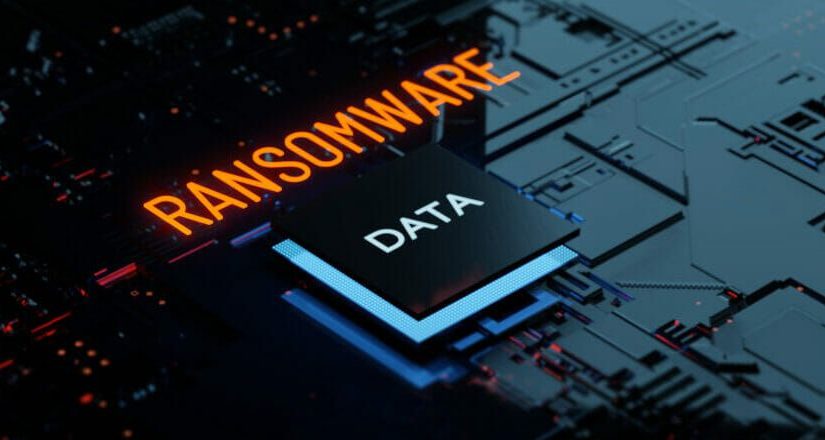What is Ransomware, and how does it work?
Ransomware is malicious software designed to keep users from their computer system. The sole purpose is to demand a ransom before access gets released. It is the fasting growing cyber threat in use today.
Attackers operate by displaying an on-screen alert on the victim’s device. Most signals indicate that they have encrypted the user’s files or locked them out. They make demands ranging between $200 to $400 payable in virtual currencies.
The attackers spread Ransomware via emails using phishing methods. These emails contain malicious attachments or drive-by downloading. When users innocently visit an infected website, malware gets downloaded and installed on their devices. With this, the attackers gain access. One common malware variant in use today is crypto Ransomware.
tI encrypts files and spreads through instant messaging applications. Ransomware attacks include permanent loss of data, total shutdown of operations, substantial financial loss, etc.
Why is Ransomware very Effective?
The developers of these cyber threats use fear tactics on their victims. They provide links for the users to click on, thereby increasing infection. Attacks display intimidating messages that compel the victims to respond without thinking.
Some of these messages take the format below
- “Your computer has a virus infection. Click here to resolve the issue.”
- “All files on your computer have been encrypted. You have 72 hours to pay this ransom to regain access to your data.”
They also use other tactics depending on the sensitivity of the data in question. These strategies are very forceful and aggressive in their approach. Here’s a list they apply
- Change of passwords
- Deleting data backups
- Threats to release the data publicly
- Enlisting insiders
- Warning victims not to contact the authorities
- The use of phishing campaigns
Why do Attackers Use Ransomware?
Ransomware is a straightforward attack mechanism to adopt. It compels victims to act fast without investigation. Like an actual ransom case, they get panicky. In a bid to resolve the issues quickly, victims make payments.
As a high-profile attack, companies tend to be their primary target. However, most companies quickly save users’ data and another database.
What Cybercriminals look for A Ransomware Attack?
Cybercriminals don’t attack a random victim. They follow specific motivations. One of the primary motivations is money. Understanding their motives puts a victim in a position to know the level of risk involved.
- Ransom
Money is always the root cause of most cyber-attacks. They look for targets that can pay. Most of these targets range from the entertainment industry to big establishments.
Small and medium businesses also suffer ransomware attacks. There’s no escaping as long as they generate some millions as revenue.
- Valuable Data
Data serve as the most crucial factor in the bunch. Its level of sensitivity determines whether it should be stolen or encrypted. The disadvantage here is that they may not be after a ransom but sale in the dark web.
- Damage Motive
Some attacks come from competitors intending to cause significant damages. They enlist the help of ransomware attackers to carry out their missions.
For some, this sponsored cyber-attack could be a way to make a statement or an act of power tussle.
- Socio-Political Motivations
Some attackers are after the prominence and not necessarily the financial gains. They use cybercrimes to make statements that critical infrastructures or government agencies cannot ignore.
Once there’s a controversy of some sort, an attack becomes most likely.
What to look out for
- Suspicious Emails
Ransomware attackers engage the use of phishing as the most effortless strategy.
They issue social engineering emails to unsuspecting victims. Users receive them as legitimate mails for companies but with malicious attachments. When the users click the extension, attackers gain access and launch their acts.
- Network Pop-up Scanners
The mode of operation starts with gaining access to a victim’s network. After this, ransomware attackers start fishing for vital information. They do this by installing a network scanning tool that appears legitimate.
- The Use of Security Disabling Apps
With applications such as process Hacker or GMER, hackers gain easy access. Deploying these apps becomes the next goal when they have already gotten administrative rights. Unfortunately, these applications help them remove security protection and leave the network vulnerable.
- Mimikatz
Mimikatz is a standard hacking tool designed for stealing credentials, hashes, or PINs. It operates by exploiting the single sign-on functionality on a windows server. What the attackers do is circumvent a perimeter defense and gain admin rights. They also get backups to steal or encrypt as much data as possible.
How to Protect a Database from Ransomware Attack
Like the saying, “Prevention is always better. There are several defensive steps to take against ransomware infection.
- Don’t install software not vital to your operations.
- Regularly update all operating system patched. Also, run vulnerability scans to detect compromises and fix them up immediately.
- Constantly backup data to an external hard drive
- Don’t give administrative privileges to just about anyone.
- Engage application whitelisting that limits installation on devices. This way, a user gains complete control.
- Have antivirus software installed on devices
- Be observant and also train employees to identify social engineering emails.
- Use a firewall or other control techniques to prevent Ransomware from accessing the command and control centers.
While there is no maximum security strategy, it is vital to know how to remove Ransomware. The knowledge prevents users from falling for their gimmicks. Once a ransomware infection becomes evident, take remedial steps to manage the situation. Here are the key processes to engage
- Isolate the infected device from the leading network. Lock up shared drives to eliminate encryption.
- Research into the situation and identify available encrypted data for backups. Also, weigh your options and see if paying the ransom is more viable.
- In the absence of a decryptor tool, restore all data from the backup.
- Reinforce lessons learned from the experience and evaluate the crisis. Find out what vulnerability resulted in the attack. How successful was the backup exercise? Find out anything that can help prevent future occurrences or remove a ransomware attack.


